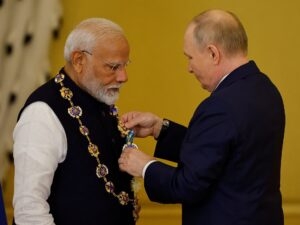
The right to safe, equitable, and timely health care is recognized as a fundamental human right. Despite this, trans and gender diverse people in Australia face significant barriers to accessing appropriate and inclusive health care, including cancer prevention and follow-up services. The federal government’s 2023 National Strategy for the Elimination of Cervical Cancer acknowledges these disparities, identifying cervical cancer as a preventable disease of inequity and highlighting trans and gender diverse individuals as a priority population requiring targeted approaches.
This development follows the efforts of a diverse team of researchers, clinicians, and health care users committed to equitable health. The team, comprising trans and gender diverse, LGBTQ+, Aboriginal, Torres Strait Islander, racial minority, and neurodivergent researchers, draws on decades of expertise to advocate for improved access to cervical cancer prevention for trans and gender diverse people.
Understanding the Current Landscape
Cervical cancer is increasingly viewed as a disease of inequity. Without addressing systemic disparities, Australia risks failing to achieve its goal of eliminating cervical cancer as a public health problem by 2035. It is estimated that 2–3% of young Australians are trans and gender diverse, and without systemic change, they will continue to experience poorer health outcomes.
Trans and gender diverse people face heightened exposure to cancer risk factors and bear a disproportionate cancer-related burden compared to the general population. Despite having equivalent rates of cancer-causing HPV as cisgender women, they are underrepresented in HPV vaccination, routine cervical screening, and early treatment access, which are crucial to meeting national elimination targets.
Only around half of trans and gender diverse participants reported having received the HPV-preventive vaccination, and nearly half of eligible participants with a cervix reported never participating in cervical screening.
Barriers and Challenges
Barriers such as insufficient evidence, data, and research that is inclusive of trans and gender diverse people exacerbate these inequities. The reliance on broader LGBTQ+ literature or research with LGBQ women is often necessary, despite the unique barriers faced by trans and gender diverse individuals.
Additionally, systemic data collection approaches remain cis-normative, omitting diversity in gender and sexuality. This lack of data limits the understanding of cervical cancer incidence and mortality among trans and gender diverse people in Australia.
Opportunities for Improvement
In 2022, the National Cervical Screening Program expanded eligibility to offer self-collection cervical screening tests to all people with a cervix. This change could improve uptake by eliminating the need for clinician-collected specimens. However, barriers persist, as screening must still be accessed through a health provider, which may deter those who lack a trusted, knowledgeable provider.
Promisingly, awareness campaigns such as New South Wales’ “Can We” platform and the national “Own It” campaign have increased inclusive representation, offering free cervical screening with self-collection options at LGBTQ+ community events. Despite these efforts, resources must be tailored specifically for trans and gender diverse people, not just cisgender women.
Addressing Vaccination Gaps
The national HPV school-based vaccination program, active since 2007, was initially restricted to “female” students until 2013, when eligibility expanded to include all genders. However, limited routine data collection means there is a lack of evidence on how to best target populations in need of catch-up vaccinations.
Moving Forward: Strategic Recommendations
To address these discrepancies and meet national targets, several key actions are necessary:
- Representation in Health Data Collection: Trans and gender diverse identities must be captured in national health data to better understand health disparities.
- Investment in Translational Research: Future research should focus on the awareness, acceptance, and experiences of trans and gender diverse people with self-collection and promotion materials.
- Comprehensive Training for Health Providers: Training should include medical staff to improve the safety and accessibility of health services for trans and gender diverse individuals.
- Investment in Awareness Campaigns: Campaigns must specifically target LGBTQ+ people with inclusive representation and language.
- Community-Led Initiatives: Materials and resources for cancer prevention should be informed and designed by trans and gender diverse people.
- Inclusivity in Catch-Up Programs: A targeted strategy is needed for school-aged and young adults who missed the initial HPV vaccination.
- Recognition of Diversity: Research should explore the diversity within trans and gender diverse populations, considering multiple forms of marginalization.
By prioritizing these actions, Australia can move towards equitable inclusion of trans and gender diverse people in cervical cancer prevention, ultimately working towards the national goal of eliminating cervical cancer as a public health issue by 2035.







